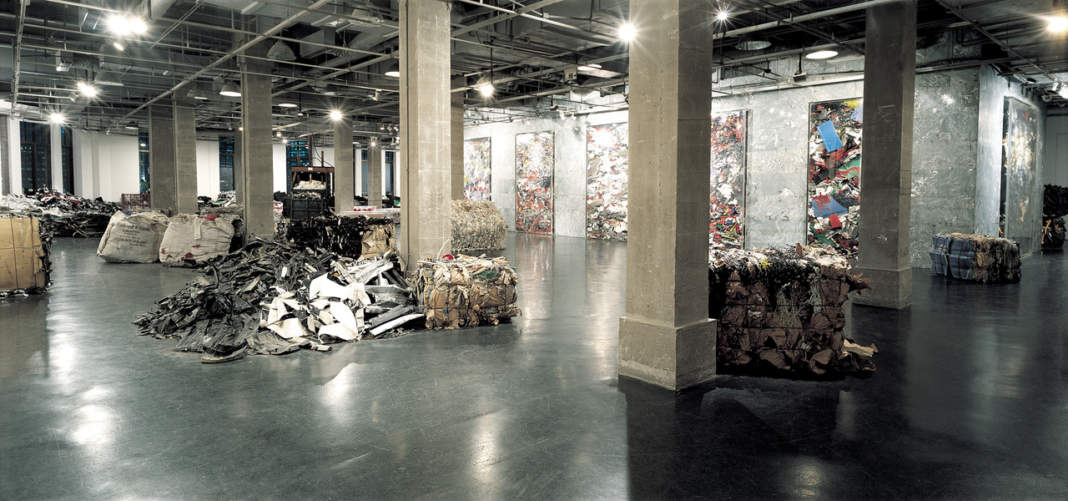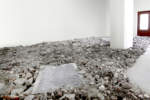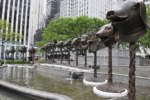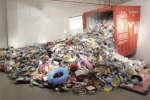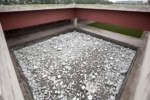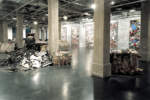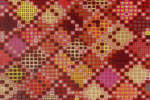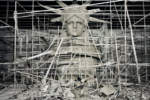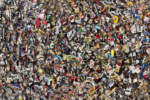The generation of Chinese artists who appeared on the artistic scene in China in the second half of the Eighties have found themselves face to face with heaps of rubble. The causes of this situation are not only to be found in the old colonial politics of Western and Japanese powers; it has also been one of the devastating effects of the Cultural Revolution (1966-1976), which saw testimonials of the past as an expression of the imperial power whose memory should not be preserved. A historical phase may be relegated to the past, but it is not always possible to recover the shards. And these young artists have therefore had to choose whether to open the horizon to modernism, and thus acquire Western languages, or to safeguard the tradition which the Cultural Revolution had sought to wipe out. To understand the complexity of the issue, it may be useful to take a step back in time. When Chinese artists were introduced to perspective illusion in the 18th century through the frescoes of Giuseppe Castiglione, a missionary who was also a painter, the emperor decided that it was necessary to ignore that manner of painting, which was closer to reality but foreign to the Chinese culture. Traditional Chinese art has been handed down from generation to generation; the lesson of the old masters has been kept alive and one has made sure that a painter of the 19th century painted just like one in the 14th. To accept the perspective rules of Renaissance thus meant to create a break. Perspective rules were therefore rejected, and Castiglione himself ceased to paint according to Western canons, adopting Chinese figurative ones and assuming the name of Lang Shih Ning.
In the light of the historical events which have marked ancient and modern Chinese history it becomes clear that it must have taken considerable courage on the part of the artists who have dominated the art scene of the Eighties and Nineties to introduce innovative elements linked to Western languages. Contemporary China is in search of symbols capable of uniting past and present. The icon of Mao is still present, but no longer as a sacred image. Stylistic references to the Maoist political propaganda have not wholly disappeared, but they are no longer used with their original intents. In Chinese contemporary art we find the place-symbols of yesterday, as the Old Summer Palace (Yuanmingyuan) of Beijing, built in the 18th century and partially destroyed in 1860, during the second Opium War, by an army led by Lord Elgin, the British High Commissioner to China.
The Yuanmingyuan serves as backdrop for Wang Guangyi's installation Scene (Biennial of Venice of 2009) and for Ai Weiwei's installation Circle of Animals/Zodiac Heads (exhibited for the first time in New York in 2011 at the Grand Army Plaza, near Central Park). Both installations refer to a period in which China was subject to the colonial power of the West. To underscore the many implications linked to the destruction of the Yuanmingyuan, Wang Guangyi has placed 12 photocopies of etchings by Castiglione on the ground, among the rubble; the artist was among the designers of the Palace. Partially burnt and sealed between two Perspex panes, these images bear witness to the desire to restore dignity to a place that has been wounded and humiliated.
A reference to Castiglione is also found in Circle of Animals/Zodiac Head, Ai Weiwei's installation with twelve sculptures inspired by the animals of the Chinese zodiac which embellished the garden of the Yuanmingyuan. Designed by Castiglione, each of these heads marked the passing of time by spurting water from their mouths every two hours. Freely interpreted on a larger scale, made in bronze and supported by a pedestal, also this in bronze, Ai Weiwei's twelve animal heads cast light on the relations between truth and falsehood, and deal with the matter of the political and social misunderstandings which underlie every image. The artist himself has explained that his version of the twelve heads of the zodiac is a Western interpretation of sculptures linked to the Chinese tradition and that "these animals of the Zodiac could be considered as a Mickey Mouse". They have not been created with the intention of expressing a monumental quality. Today only seven of the original heads have been recovered – the rat, the rabbit, the ox, the tiger, the horse, the monkey and the boar – and the five missing one have therefore been reinvented by the artist. To stress the political meaning of the installation, Ai Weiwei has explained that while anyone may enjoy the sight of a work of art today, this pleasure was a privilege reserved for kings and nobles in China in the past.
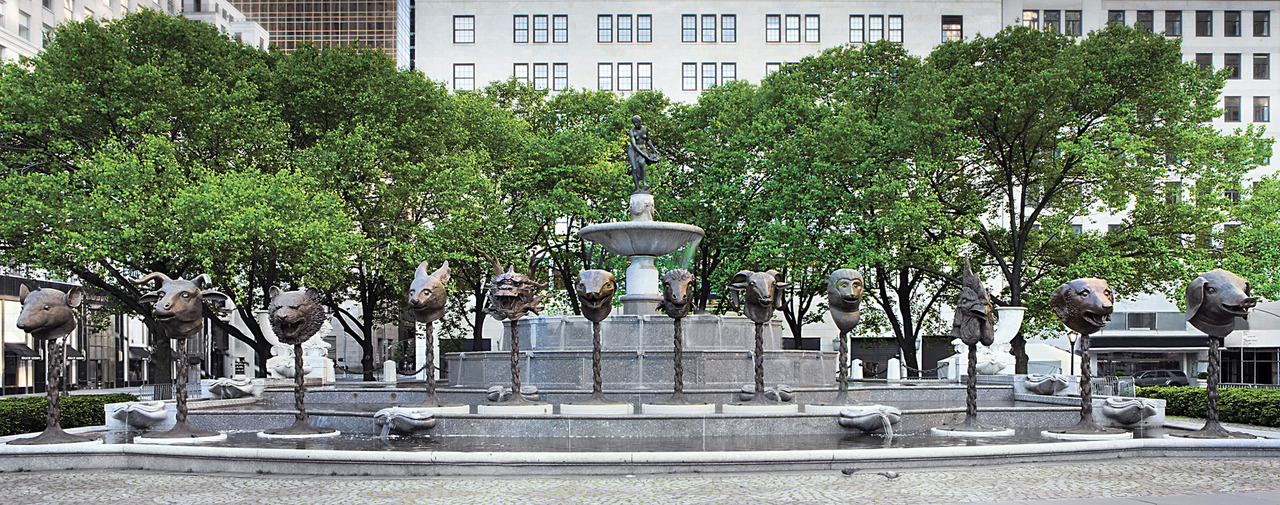
The desire to recover the heads of the Zodiac of the Yuanmingyuan has been so great in China that when the sculptures representing the rat and the rabbit, which were the property of Yves Saint-Laurent, were actioned by Christie's in 2009, Cai Mingchao, counsellor of the National Treasure Fund of China, made an offer of 19 million dollars to then refuse to pay the amount, asserting that those sculptures were the rightful property of China, on the grounds that they had been looted. The phantasm of rubble, with all its political implications, recurs in Ai Weiwei's work.
So Sorry is an installation which centres on the death of nine thousand children crushed by the rubble of their schools during the earthquake in Sishuan in 2008. According to estimates the earthquake killed eighty thousand persons. To denounce the corruption and the responsibility of the governors who had authorized the construction of the school buildings, built with inadequate materials, Ai Weiwei has reconstructed, with the help of social networks, the history of 5190 small victims, breaking the silence imposed by the authorities. For his exhibition So Sorry he has also installed nine hundred red, yellow, green and blue rucksacks on the façade of the Haus der Kunst Museum of Munich, arranged to form the words pronounced by the mother of one of the victims: "He has lived happily in this world for seven years" in Mandarin. The concept of rubble returns in Chinese art with works that highlight the way that the opening to international markets has resulted in the production of objects made to be rapidly consumed and thrown away. This theme is forcefully present in Liu Jianhua's installation Yiwu Survey, exhibited for the first time at the Shanghai Biennial in 2006. The work consists of a container which projects from a wall, pouring thousands of cheap objects into the exhibition room. The products all come from Yiwu, a manufacturing and trade area of several million square meters, entirely covered by stands and industrial sheds. Ninety per cent of the cheap goods which invade the international market come from Yiwu. Liu Juanhua tackles the subject of the production of designed to be discarded after a short while with the installation Export-Cargo Transit from 2007, made with industrial refuse produced by developed countries and imported illegally in China and third world countries. Another of his installation titled Discard features heaps of broken porcelain; it refers to the fact that in the Chinese capital of porcelain, Jingdezhen, it has for a long time been customary to crush porcelain which has been found to be flawed after the firing and throw it away along the roads or in the rivers, forming heaps of refuse. Recreating heaps of broken porcelain in the exhibition area, Liu Jianhua has highlighted the widespread tendency not to preserve historical memory but to discard it, as if it were refuse. The sense of a society which tends more and more towards the ephemeral is also expressed by the Triviality cycle by Yue Minjun, an artist known for his self-portraits in which he appears with an enigmatic laughter. In these large collages realized in 2013 Yue Minjun covers the canvas surface with photographs and cuttings from glossy magazines which reproduce products linked to the world of fashion and glamour. The reference is to the confusion created in our minds under the bombardment of propaganda.
In the work of these artists one perceives, like an underlying theme, the change of the development model which is rapidly transforming the townscape and the social tissue of China. In Ding Yi's paintings the lights of the Bund in Shanghai are reflected on the canvas, creating an abstract grid which, with its intense and luminescent colours, reveals the visual noise of a changing metropolis. This development model has also, as Wang Qingsong points out, influenced interpersonal relationships, and tends to wipe out the values on which the Chinese society has been built until now. Goddess, a photo taken by him in 2011, for which realization the artist has created a studio arrangement, features the bust of the Statue of Liberty wearing a Maoist jacket. Among the rubble, scaffolding and hens searching for food one catches a glimpse of a book on which the date of the declaration of independence of the United States is engraved. The image seems to suggest that the new Chinese society, which is still under construction, is already beginning to show the first cracks and is creating bewilderment among people overwhelmed by such a rapid change, dominated by interests.
Demetrio Paparoni is a writer, art critic and curator. From 1983 until 2000 he was editor in chief of Tema Celeste, contemporary art magazine. In 1993 he was appointed commisioner for the Italian Pavilion at 45th Biennal of Venice. In 2007 he was the curator of Mentalgrafie italiane at Tel Aviv Art Museum of Art, the biggest Italian art exhibition ever realized in the Middle East. He is the author of numerous art books including Chuck Close (2002), Tony Oursler (2011), Anish Kapoor (2011), Ding Yi (2012), Wang Guangyi (2013), Li Songsong (2013). His last book "Il Bello, il buono e il cattivo/come la politica ha condizionato l'arte negli ultimi cento anni" was published in 2014 by Ponte alle Grazie.


